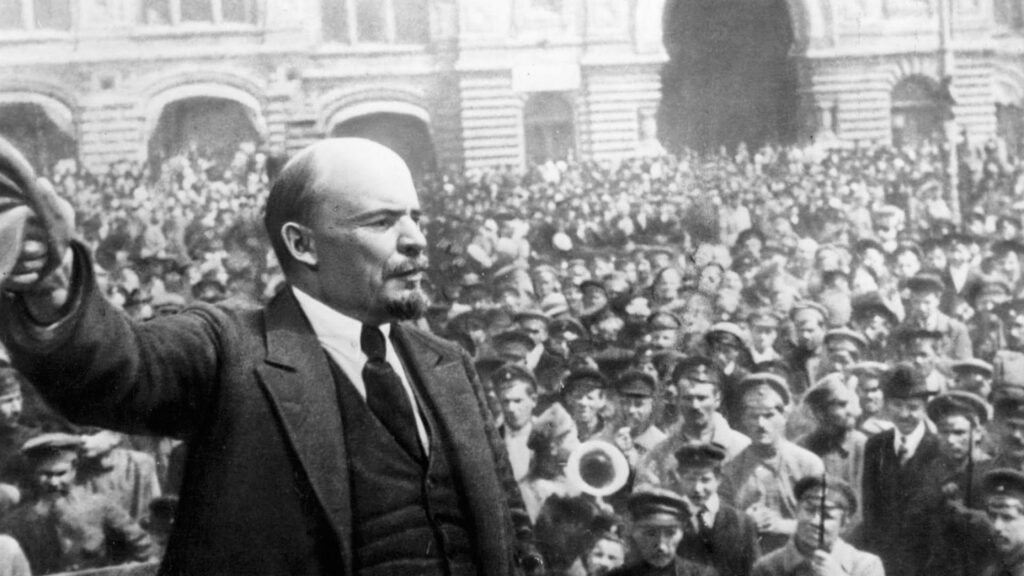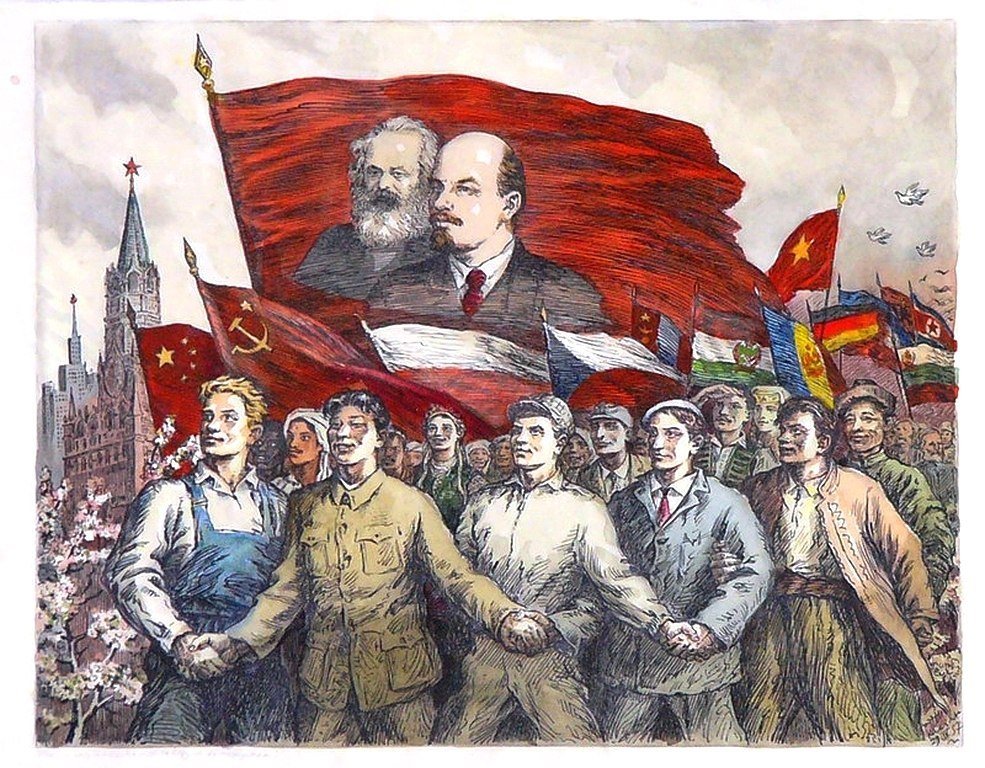Lenin’s two-stage theory of revolution has been a crucial framework for understanding revolutionary processes, particularly in societies with complex social and economic structures. Initially conceived in the early 20th century to address the unique conditions of Tsarist Russia, this theory has since been adapted and applied to revolutionary movements across the globe, especially in semi-colonial and developing countries. This article provides a comprehensive analysis of the historical development of Lenin’s two-stage theory, its practical application in various revolutionary contexts, and its ongoing relevance in contemporary struggles against imperialism and capitalism.
The Origins of the Two-Stage Theory: Contextualizing Lenin’s Strategy
The two-stage theory was developed in response to the specific socio-political conditions of Tsarist Russia, a semi-feudal, agrarian society with a relatively underdeveloped capitalist economy. Unlike the advanced capitalist societies of Western Europe, Russia lacked a strong bourgeoisie capable of leading a democratic revolution against the autocratic state. Lenin’s insight was that in such a context, the proletariat, in alliance with the peasantry, would have to lead both the democratic and socialist stages of the revolution.
Early Writings and the 1905 Revolution
Lenin’s early formulation of the two-stage theory can be traced back to his work, Two Tactics of Social Democracy in the Democratic Revolution (1905). Written during the upheavals of the 1905 Revolution, Lenin argued that the immediate task of the revolution was to overthrow the Tsarist autocracy and establish a democratic republic. This first stage, the bourgeois-democratic revolution, would lay the groundwork for the subsequent socialist revolution.
Lenin’s strategic innovation was his emphasis on the revolutionary potential of the peasantry and the need for a “democratic dictatorship of the proletariat and peasantry.” He argued that the Russian bourgeoisie was too weak and compromised to lead a genuine democratic revolution. Therefore, it fell to the working class, in alliance with the peasantry, to carry out the tasks of democratization, land reform, and national self-determination. This was a significant departure from the Menshevik position, which held that the working class should support the bourgeoisie in leading the revolution and that a prolonged period of capitalist development was necessary before a socialist revolution could occur.
The Implementation of the Two-Stage Theory: The 1917 Revolution and Its Aftermath
The events of 1917 provided a practical test for Lenin’s theory. The February Revolution overthrew the Tsarist regime and established a Provisional Government dominated by liberal and bourgeois forces. However, this government failed to address the fundamental demands of the masses for “peace, land, and bread.” Lenin, returning from exile in April 1917, issued his famous “April Theses,” calling for the transfer of power to the soviets and the immediate pursuit of socialist objectives.

The October Revolution, led by the Bolsheviks, demonstrated the viability of Lenin’s theory. The Bolsheviks, having gained majority support in the soviets, were able to overthrow the Provisional Government and establish a government based on the soviets. This marked the beginning of the second stage of the revolution, characterized by the nationalization of industry, land redistribution, and the establishment of a planned economy.
The Civil War and the Consolidation of Soviet Power
The success of the October Revolution was followed by a brutal civil war (1918-1921), in which the new Soviet state faced opposition from both domestic counter-revolutionary forces (the Whites) and foreign interventionists. The civil war tested the resilience of the Bolshevik regime and the strength of its alliances with the working class and peasantry. Despite severe hardships, including widespread famine and economic collapse, the Bolsheviks managed to prevail, consolidating their hold on power.
The civil war period also highlighted the challenges of transitioning from the democratic to the socialist stage of the revolution. The policies of “War Communism,” implemented as emergency measures to sustain the war effort, led to widespread discontent among the peasantry, who resisted the forced requisitioning of grain. Lenin recognized the need to recalibrate the relationship between the state and the peasantry, leading to the introduction of the New Economic Policy (NEP) in 1921. The NEP represented a temporary retreat from socialist measures, allowing for a limited reintroduction of market mechanisms and private enterprise in the countryside to stabilize the economy and rebuild the alliance with the peasantry.
The Application of the Two-Stage Theory in the Global South
Lenin’s two-stage theory has been particularly influential in the revolutionary movements of the Global South, where social conditions often resemble those of pre-revolutionary Russia. In many semi-colonial and developing countries, the tasks of national liberation, land reform, and democratization have been intertwined with the struggle for socialism.
The Chinese Revolution
The Chinese Revolution, led by the Communist Party under Mao Zedong, is one of the most prominent examples of the application of Lenin’s two-stage theory. In the context of a semi-feudal society dominated by foreign imperialist powers and a weak, compromised bourgeoisie, the Chinese communists prioritized the bourgeois-democratic tasks of land reform and national liberation. The victory of the revolution in 1949 marked the culmination of the first stage, followed by a rapid transition to the socialist stage, characterized by the nationalization of industry and collectivization of agriculture.
Mao’s adaptation of Lenin’s theory emphasized the role of the peasantry as the principal revolutionary force, given China’s overwhelmingly agrarian social structure. This adaptation was crucial to the success of the revolution, demonstrating the flexibility of Lenin’s framework in addressing diverse social realities.
The Cuban Revolution
The Cuban Revolution of 1959, led by Fidel Castro and Che Guevara, also followed a two-stage trajectory. Initially focused on overthrowing the U.S.-backed Batista dictatorship and implementing democratic reforms, the revolution quickly transitioned to the socialist stage, with the expropriation of foreign and domestic capital and the establishment of a planned economy. The revolution’s success in transforming Cuban society, despite the constraints of U.S. imperialism and economic blockade, underscores the relevance of Lenin’s theory for revolutionary movements in the Global South.
Criticisms and Debates Surrounding the Two-Stage Theory
While Lenin’s two-stage theory has been widely influential, it has also been the subject of significant debate and criticism. Some of the key points of contention include:
The Role of the Bourgeoisie
Critics argue that Lenin’s theory underestimates the potential for the bourgeoisie to play a reactionary role, even in the democratic stage of the revolution. Historical experience has shown that the bourgeoisie often allies with reactionary forces to suppress revolutionary movements, as seen in the counter-revolutions in Spain (1936-1939) and Chile (1973). This has led some theorists, notably Leon Trotsky, to advocate for a strategy of “permanent revolution,” which posits that the proletariat must pursue socialist objectives from the outset, bypassing the bourgeois-democratic stage.
The Relationship Between the Proletariat and the Peasantry
The relationship between the proletariat and the peasantry is another contentious issue. While Lenin emphasized the need for an alliance between these two classes, the experience of socialist revolutions has shown that this alliance can be fraught with contradictions. In many cases, the interests of the urban working class and the rural peasantry diverge, particularly over issues such as land reform and the organization of agricultural production. The failure to adequately address these contradictions contributed to the crisis of collectivization in the Soviet Union and the Great Leap Forward in China.
The Applicability of the Theory to Advanced Capitalist Societies
Another point of debate is the applicability of the two-stage theory to advanced capitalist societies. Some argue that the theory is primarily relevant to pre-capitalist or semi-colonial societies and that revolutionary movements in advanced capitalist countries require a different strategy. However, others contend that the two-stage framework remains useful for understanding the complex, uneven development of global capitalism and the need for revolutionary movements to address both democratic and socialist tasks.
The Relevance of the Two-Stage Theory Today
In the 21st century, the conditions that Lenin analyzed have evolved, but the fundamental contradictions of capitalism and imperialism persist. In many parts of the Global South, the struggle for national sovereignty, land reform, and economic development continues to be intertwined with the fight for socialism. The experiences of countries such as Venezuela, Bolivia, and Nepal demonstrate the ongoing relevance of the two-stage theory in navigating the challenges of revolutionary transformation.
Moreover, the rise of new forms of imperialism and global capitalism, characterized by financialization, neoliberalism, and the increasing concentration of wealth and power, has created new challenges for revolutionary movements. The two-stage theory offers a strategic framework for addressing these challenges, emphasizing the need to build broad-based alliances, address immediate democratic and economic demands, and prepare for the transition to socialism.

Renewing the Revolutionary Tradition
Lenin’s two-stage theory of revolution remains a powerful analytical and strategic tool for revolutionary movements. Its emphasis on the dialectical relationship between democratic and socialist tasks, the role of the proletariat and peasantry, and the need for a revolutionary vanguard party are all crucial elements for understanding and transforming society.
As we confront the challenges of global capitalism, environmental destruction, and social inequality, the lessons of Lenin’s theory offer valuable insights for building a new revolutionary movement. By learning from both the successes and failures of past revolutions, we can develop strategies that are responsive to contemporary realities and capable of achieving a just and equitable world.
The struggle for liberation and socialism is a long and complex process, but with the guidance of Lenin’s theoretical framework, it is possible to chart a course towards a revolutionary future.

